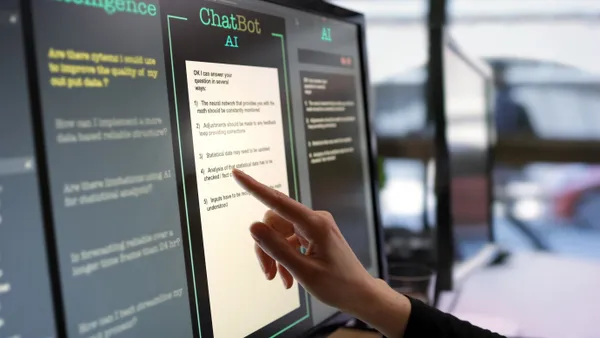Dive Brief:
- A new report from the Consortium for School Networking (CoSN) focuses on the hurdles schools face on the path to successful innovation, serving as the first in a series of three on school tech innovation and integration that will ultimately form a toolkit to assist administrators with strategic planning, eSchool News reports.
- The top five hurdles to innovation that school districts face include scaling and sustaining innovation, dealing with digital equity issues, closing the gap between tech and pedagogy, engaging teachers in ongoing professional development about tech issues, and determining how tech in schools will impact the future of work.
- CoSN has convened an advisory board of more than 100 ed tech experts who recommend that educators also bring these issues to the community and initiate discussions on how local industry and community organizations can help provide more engaging learning experiences to prepare students for participation in the "fourth industrial revolution."
Dive Insight:
The current economy is centered around the need for innovation, with most workplaces in a constant state of evolution. The leaders of the present and the future need the ability to envision that change or, at least, the to adapt quickly and pivot when it is thrust upon them. That is why innovation in education is more important now than ever before.
However, innovation doesn't always come easy. It requires the expertise of school leaders like chief technology officers, tech advisors and school media specialists/librarians to help principals and superintendents determine what forms of innovation best work for the school district and best support learning. These tech leaders also aid in the successful training needed to implement innovative ideas effectively. Because of the growing importance of these roles, these tech leaders can be among a superintendent’s most valued resources.
School leaders don’t need to feel that they have to reinvent the wheel when it comes to innovation, however. They can connect with other schools and school leaders who have covered some of this ground before. That is one reason that collaboration across schools and districts is critical to success. Looking at what other districts are using and finding ways to adapt their models and best practices can save a lot of time, money and headaches, because many of the "bugs" are worked out before implementation. Keeping in mind the reasons for innovation, and constructing a clear mission statement behind it for the school community, is essential to making sure new initiatives are properly implemented.












